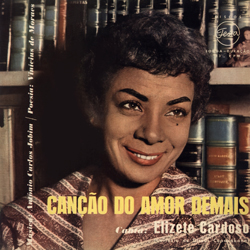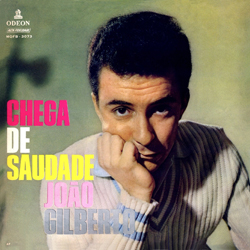In the late 1950s, bossa nova emerged during a brief window of freedom that existed between two military dictatorships in Brazil. It took inspiration from European classical music, American jazz, and earlier Brazilian styles such as samba, and it added poetic lyrics to create deceptively simple songs that were sophisticated yet emotional. The music has an appeal that grabs listeners, but it also has a depth that rewards study.

Bossa nova was a modern music, full of the optimism that existed in the country during that time. It was clearly of Brazil, with syncopated rhythms and Portuguese lyrics, but there was something that made it appealing to audiences around the world. Since its introduction, bossa nova has entered the common parlance of the popular music world, retaining a bit of its exotic mystery in spite of its ubiquity.
“Bossa nova is a rare example of music that becomes popular by being more sophisticated,” according to singer Caetano Veloso. The Guardian, Oct 1, 2013
Brazil has a musical culture that is centuries old and includes folk as well as classical traditions. These were the foundation out of which bossa nova grew. Prior to 1958 when the first bossa nova record was released, elements of the new style could be found in disparate sources, including Brazilian samba and American jazz, which was popular in Brazil, particularly among musicians.
Brazilian samba began at the end of the nineteenth century, with strong African influences that were tied to the slave trade and religious ceremonies. It became popular in the 1930s and 1940s, developing from a folk music to a popular music with noted composers, such as Ary Barroso and Noel Rosa.
Samba continues to be associated with Carnival, the annual pre-Lenten holiday celebration. The massive parades with costumes, dancing, and infectious music are grand spectacles that attract millions. Samba music, with its focus on percussion, lent its rhythms to the new bossa nova style, where they were translated to the jazz drum kit.
The harmonic sensibility of bossa nova owes much to American jazz,
which was very popular among Brazilian musicians. Pianist Johnny Alf (1929-2010), known as “Senhor Modernidade” (Mr. Modernity) was an important influence on bossa nova pioneers Antônio Carlos Jobim, Carlos Lyra, and Roberto Menescal, who would all regularly attend Alf’s performances at the Hotel Plaza in Rio. Another influential pianist-composer, João Donato (1934-), was a frequent participant at jam sessions held by the Frank Sinatra fan club that Johnny Alf co-founded in Rio in the late 1940s. Donato said, “From him I learned all of the modern harmonies that Brazilian music began to use in the bossa nova, samba-jazz and instrumental songs.” (http://www.nytimes.com/2010/03/12/arts/music/12alf.html)It was Donato’s piano playing, with samba-influenced rhythms and jazz harmonies, that in turn inspired guitarist João Gilberto. His quiet guitar accompaniment style subtly implied the samba rhythms of the pandeiro, or Brazilian tambourine.
The percussionist Milton Banana (1935-1998) played an important role in defining the style of drumming to accompany the bossa nova. He was an active session musician and played on many of the pioneering recordings.
Gilberto (1931–) was one of three bossa nova pioneers, along with Vinícius de Moraes and Antônio Carlos Jobim. Their collaborations in the late 1950s launched the new music.
Gilberto also provided the true voice of bossa nova, understated rather than extravagant like the vocal style of earlier Brazilian popular music singers, such as the international star Carmen Miranda. This was a big change, and was not immediately accepted by the music industry.
Artistic director of the São Paulo Symphony Orchestra Arthur Nestrovski says of Vinícius de Moraes’s lyrics: “They’re based on the way Brazilian Portuguese is spoken, which has a natural rhythmic syncopation. If you try and sing these songs with a big voice, they sound kitsch. They are not the kind of anthemic samba songs you get at a Brazilian carnival. The trick is to sing bossa nova as if you are speaking, like João Gilberto did. That way it sounds intimate, informal and conversational.” (http://www.theguardian.com/music/2013/oct/01/bossa-nova-highest-culture-brazil)
Brazilian record companies were unsure about Gilberto’s radical style, and so the first bossa nova record was made in 1958 by singer Elizete Cardoso (1920–1990), an established performer with a more grandiose style, with the involvement of João Gilberto, Antônio Carlos Jobim, and Vinícius de Moraes.
The eldest of the three, Vinícius de Moraes (1913–1980), was an established and well regarded poet. He had studied law and attended Oxford before working for the Brazilian government in the 1930s and 1940s as a diplomat. In 1954 Vinícius wrote the award-winning play Orfeu da Conceição, and it was during that play’s production in 1956 that he first met Jobim.
Antônio Carlos “Tom” Jobim (1927–1994) was a well-trained composer and pianist who worked in the recording industry arranging the music of other composers. He was influenced by the music of classical composers Claude Debussy, Maurice Ravel, and Heitor Villa-Lobos as well as by the Brazilian choro composer Pixinguinha.
Over the course of his long career, Jobim wrote hundreds of songs, many of which formed the essential repertoire of bossa nova. “Samba de Uma Nota So” (One Note Samba), “Corcovado” (Quiet Nights of Quiet Stars), “Chega de Saudade” (No More Blues), “Desafinado” (Out of Tune), “Insensatez” (How Insensitive), and “A Felicidade” (Happiness) are but a few of these.
Jazz saxophonist Joe Henderson said: “I rank him right up there with Cole Porter as one of the great composers of this century. He was an incredible tunesmith who left a vast legacy for us as musicians.” (New York Times, April 16, 1995)]


